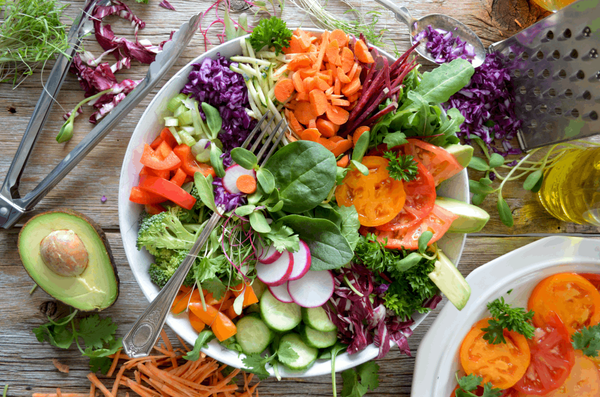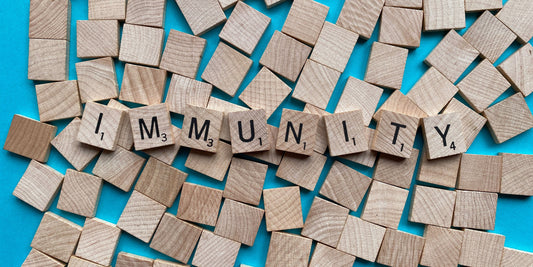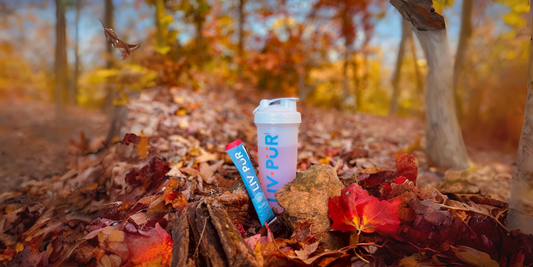When you’re in the zone, a water break isn’t always convenient. But with everything from coordination and focus to endurance and recovery at stake, we need to stay on top of fluids.
Fortunately, hydration isn’t all about water intake. Today, we’re talking about how much water you should drink, as well as ways to stay hydrated without drowning in H20.
What is hydration?
Hydration refers to the replacement of fluids. We lose fluids from sweating, using the bathroom, and even breathing.
On average, we lose two to three quarts of fluid daily. This can easily increase if we’re pushing our bodies to the limit or get sick. The fact that the first thing many emergency rooms do is give you IV fluids for dehydration is a key indicator of how important it is.
Ultimately, hydration isn’t just about fluid; it requires minerals also known as electrolytes. Electrolytes make it possible for water to access the cells, keeping us hydrated.
How much water should you drink a day?
General guidelines state that men should consume 3.7 liters daily, while women should strive for 2.7 liters.
However, like most fluid intake recommendations, this doesn’t actually mean that you need to drink a few liters of plain water daily. This amount includes water from other beverages (even your morning coffee) as well as water in foods, which we’ll cover in a few minutes.
How much water should you drink based on your weight?
If you’re serious about drinking the right amount of water, it’s best to consider your body weight. On average, try to get half an ounce for every pound you weigh. So, if you weigh 185 pounds, that would be roughly 92.5 ounces or 2.7 liters.
Should you be performing any type of strenuous activity, from lifting weights to doing some landscaping, double that amount and make it one ounce per pound.
Again, this includes water from other beverages and foods, too.
Is a gallon of water a day a good amount?
“A gallon a day” is a relatively common goal among fitness enthusiasts. If nothing else, it takes the guesswork out of determining how much water you should drink in a day.
However, drinking a gallon a day is not appropriate for everyone. In fact, if you try to drink any large amount of water quickly, the sodium levels in your blood could drop too low. This is called hyponatremia.
In severe cases, hyponatremia can be life-threatening. Many just experience some fatigue and cramping, which still defeats the purpose of hydrating.
The Benefits of Hydration
We know water is essential. But here are some specific reasons to inspire a little more commitment to optimal hydration.
- Improves digestion and prevents constipation
- Supports the body’s natural detoxification processes
- May improve skin thickness and density for a smoother, plumper appearance • Helps lubricate the joints for better performance with fewer aches • Promotes better sleep quality
- Helps maintain mental clarity and cognitive function
- Facilitates internal temperature regulation, increases heat tolerance • Supports weight loss and maintenance
How to Stay Hydrated
Not joining the Gallon a Day challenge? We don’t blame you. Here are several alternatives for maintaining good hydration.

1. Eat hydrating foods.
If round-the-clock hydration is your goal (and it should be) here are some dietary strategies that work hand-in-hand with drinking enough water.
First is produce. A diet that includes five daily servings of fresh fruits and vegetables can easily help you meet fluid intake targets. Some of the most water-rich fruits and veg include:
- Melons (Watermelon, cantaloupe, honeydew)
- Strawberries
- Lettuces
- Cucumbers
- Oranges
- Celery
- Zucchini
- Tomatoes
- Grapes
- Spinach
Next, include foods that soak up a lot of water. The first one that comes to mind is pasta, but if you’re managing blood sugar levels at the same time, try whole wheat or chickpea pasta.
Oatmeal is one of the best options. The water it soaks up as it cooks makes for a hydrating breakfast, while the fiber content promotes satiety and stable energy levels.
In addition to being a nutritional powerhouse, chia seeds are tiny sponges for any fluid you put them in. Once you soak and eat them, the gel-like texture releases fluid more slowly than straight liquid for sustained hydration.
2. Pace yourself.
Too many of us tend to get swept up in our busy schedules, eating or drinking after hours of having our attention elsewhere.
You’ve probably seen those water bottles that have time markings on them. They help set visual goals to drink a certain number of ounces by a specific hour of the day. Take this same principle and apply it to anything that counts toward your fluid intake.
Spacing it out prevents the need to drink larger quantities of water when symptoms of dehydration appear.
The most relevant example of this would be hydrating before you know you’ll be exerting yourself. Have the hydration drink or water half an hour prior to breaking a sweat, and you won’t need to drink as much later on.
3. Cut down on coffee and alcohol.
You may have heard that coffee is dehydrating. This isn’t technically true, and even the water used to make your morning coffee counts toward your daily fluid intake.
Why slow down then? If your coffee preferences involve multiple cups a day or extra large lattes, the caffeine can have a diuretic effect. You’re losing more water than you normally would, affecting overall hydration.
Keep it to a cup, or at the very least, don’t drink it throughout the day. Get an afternoon caffeine boost from more performance-supporting formulas with minerals and amino acids.
Alcohol is an even bigger diuretic than coffee, making the chances of actual dehydration much greater. This is evident through the terrible phenomenon known as a hangover.
We can avoid a lot of the nausea, headache, sensitivity to light, and other symptoms simply by hydrating beforehand.
To do so, we’re commonly advised to drink water in between every alcoholic drink. If this were practical or widely effective, hangovers wouldn’t exist. That’s why it’s best to limit yourself to a drink or two.
If that’s not happening, the next tip may work.
4. Reach for a hydration drink.
Slamming a ton of water can dilute the blood a little too much. But with intense activity (or a night out) comes greater hydration needs. This is the purpose of hydration drinks.
Hydration drinks typically offer electrolytes and nutrients. Taken before and after drinking, this can improve hydration levels without gulping down water all evening.
Hydrate Faster with Electrolytes

What makes a hydration drink different from water or sports drinks? It focuses on those electrolytes we mentioned earlier. Here are a few and their biggest benefits:
Sodium
Sodium is essential for regulating blood pressure, maintaining healthy fluid balance, and helping you absorb other nutrients.
Calcium
Best known for its bone-building benefits, calcium is also a big help when it comes to the nervous system, seamlessly linking the brain and body.
Potassium
Potassium is perfect for some of the same reasons as sodium, but one of its most important functions is relaxing blood vessels for better flow. It’s also key for nerve health.
Magnesium
Magnesium is a superstar for stable sugar, stronger bones, and muscular health. It also helps support cells on their mission to manufacture energy.
There’s a lot more to know, so feel free to keep reading about electrolytes and hydration drinks.
As for hydrating as quickly as possible, it requires a little more than minerals. Hydration drinks that contain some carbs with glucose can help put sodium and its friends on the fast track through the intestinal wall and into the bloodstream. This mechanism is called the sodium-glucose transport system.
It’s this form of electrolyte transport that enables LivPur to hydrate the body two or even three times faster than formulas without it.
LivPur Hydrate also contains B vitamins, vitamin C, and a wide range of amino acids for overall wellness, which is always important to hydration balance. Plus, it’s NSF Certified for Sport, so choose your favorite flavor today and Hydrate with confidence.




